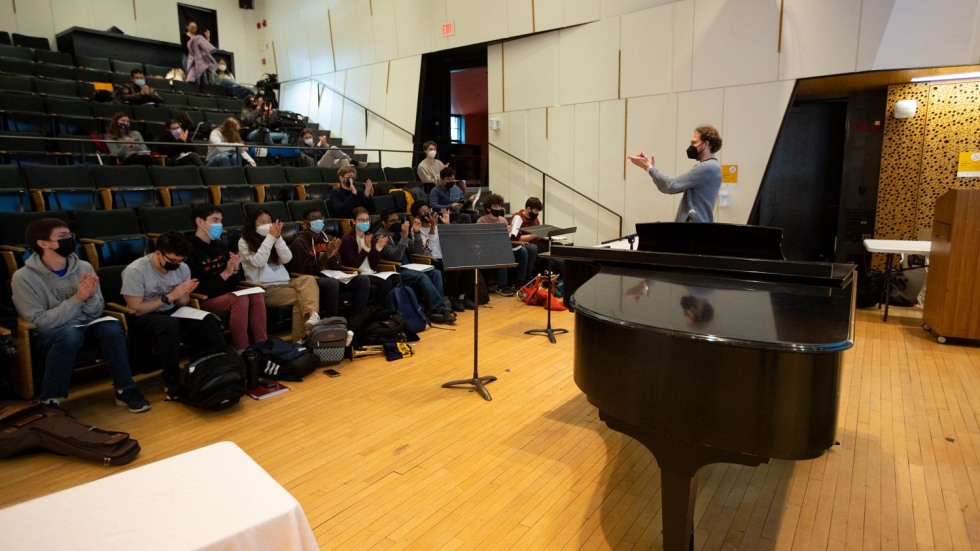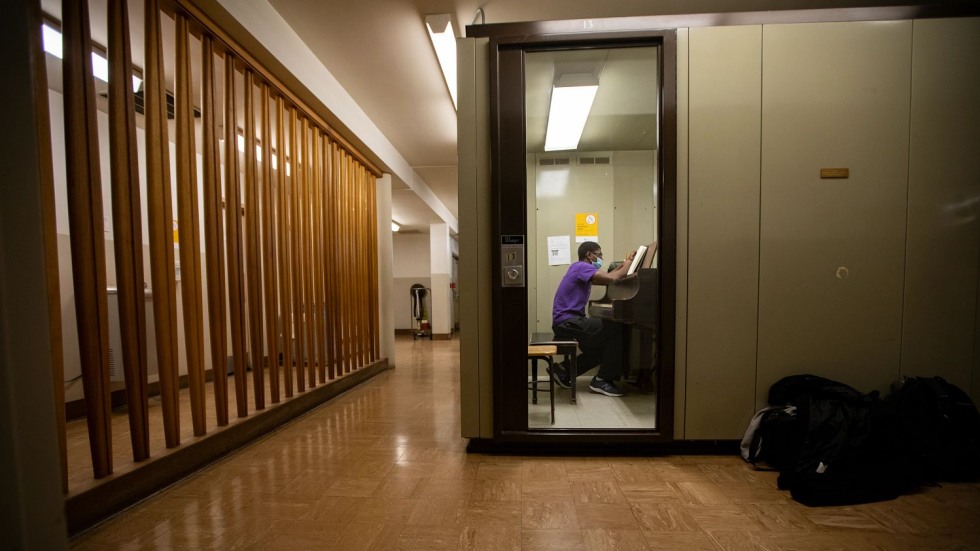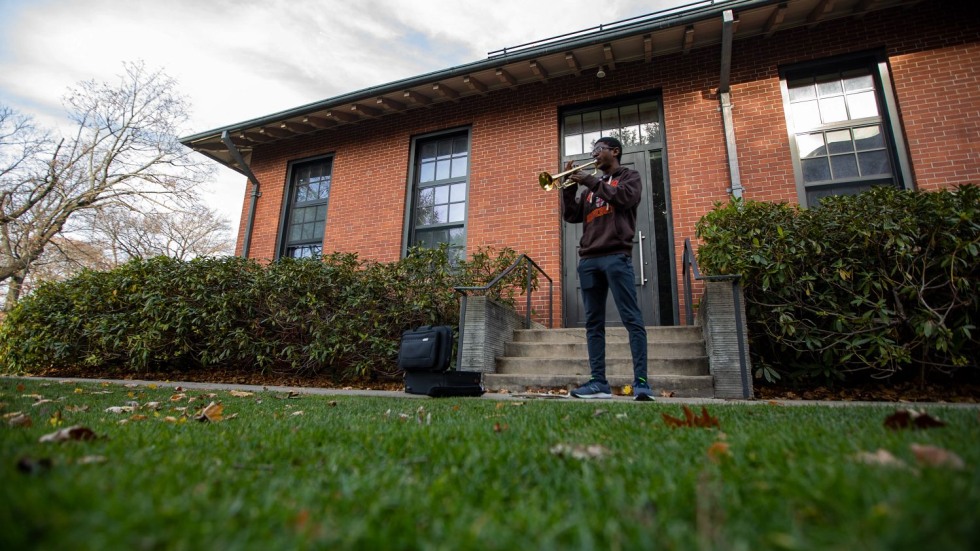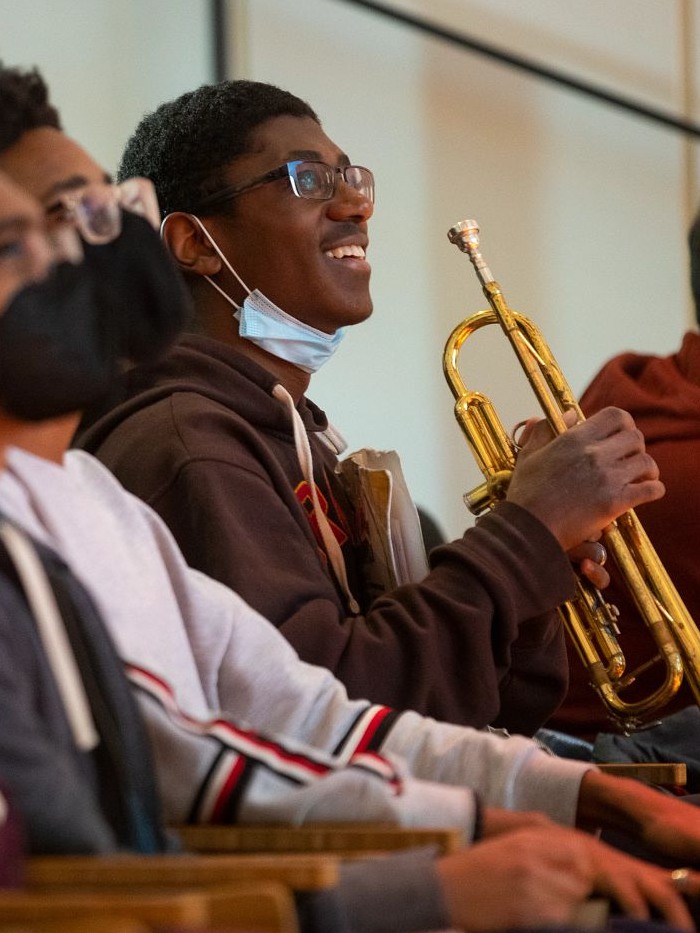PROVIDENCE, R.I. [Brown University] — When he sat down to write a pop song early in the Fall 2021 semester, Derrick Pennix Jr. followed his own golden rule: Start with the ending.
“When I’m telling a story, I work backward,” said Pennix, who is wrapping up his first semester at Brown University this month. “If you know how you want the story to end, it helps you think about the journey you’ll have to take to get there.”
That self-taught rule has long served Pennix well. As a high school student in Granger, Indiana, he was able to finish and publish his own five-part stop-motion animated series because he had the conclusion in mind from the outset. And when he thought about life after high school, he ultimately chose to attend Brown by visualizing his end goal: a college education that afforded him the freedom to explore his many and varied interests, from music to writing to film and beyond.
Pennix took more than a month to compose a pop song, the final project in his Theory of Tonal Music I course. But the process felt manageable, he said, because he began with the big, sweeping, culminating chorus.
“My chorus is the point in the song where the narrator is finally free, and they just let go,” Pennix said. “They’re full of confidence and attitude — kind of like ‘Captain America’ in that scene where Agent Carter says to him, ‘Even if the whole world is telling you to move, it is your duty to plant yourself like a tree, look them in the eye, and say 'No, you move.’ So now, when I think about writing the verses, I can ask myself: How did the narrator get here? Who were they before, and what caused them to change?”



